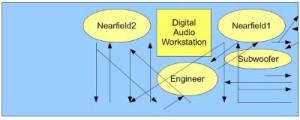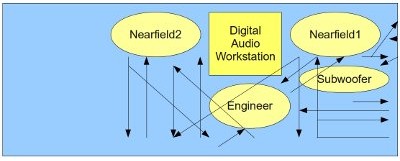For beginners in home recording and mixing, it is of primary importance and priority that you acoustically treat your room for flat frequency response. This monitoring environment would tell the truth about the quality of your mix. This implies that what you really hear during mixing can translate “accurately” to a wide variety of audio reproduction systems (like iPod, CD discman, television, radio, or even hi-fidelity systems with subwoofers or not).
If the room is not acoustically treated to handle these imperfections, your mix might only sound good in your studio but sounds bad when reproduced in other audio monitoring systems. No matter how expensive your nearfield/reference monitor, you still need to acoustically treat your room if you are really serious about the quality of your mix.
Causes of bad mix brought about by erroneous room response
What are the causes of this “frequency” biases problem that makes your mix to lie to you? (sounds good in your studio but sounds bad in other studios or audio monitoring/speaker systems)
Consider the arrangement below (which is not correct and not optimal placement for doing audio mixing at home):

Issues with this setup:
1.) Standing waves and reflected waves, distort the actual level of the frequency being heard by the engineer.
Why? When you see the arrows in the above screenshot, these arrows are the sound waves leaving the monitors, they reflect on the walls without acoustic treatment. What happen is that , they reflect right away because the speaker sound waves needs only to travel in a shorter distance as shown in the above screenshot.
These reflective waves can magnify or distort the actual sound level of the mixed audio. So for example if that frequencies belongs to a guitar track that is around 500 to 5000Hz, the engineer may think that the guitar volume is too loud. So what will happen is that he will lower the volume of that track in the mix, which in reality is NOT really loud but is composed of the standing/reflected waves from the monitoring system. This is how these reflected sound waves can contribute to inaccuracies in your audio monitoring environment.
2.) The studio monitors are not oriented well to the engineer, so he cannot visualize clearly the stereo image of the mix. Based on the screenshot, a lot of sound waves will not be aimed at engineers ear and instead reflect on the surfaces/walls of the studio. This again , can bias the reproduced sound.









No responses yet